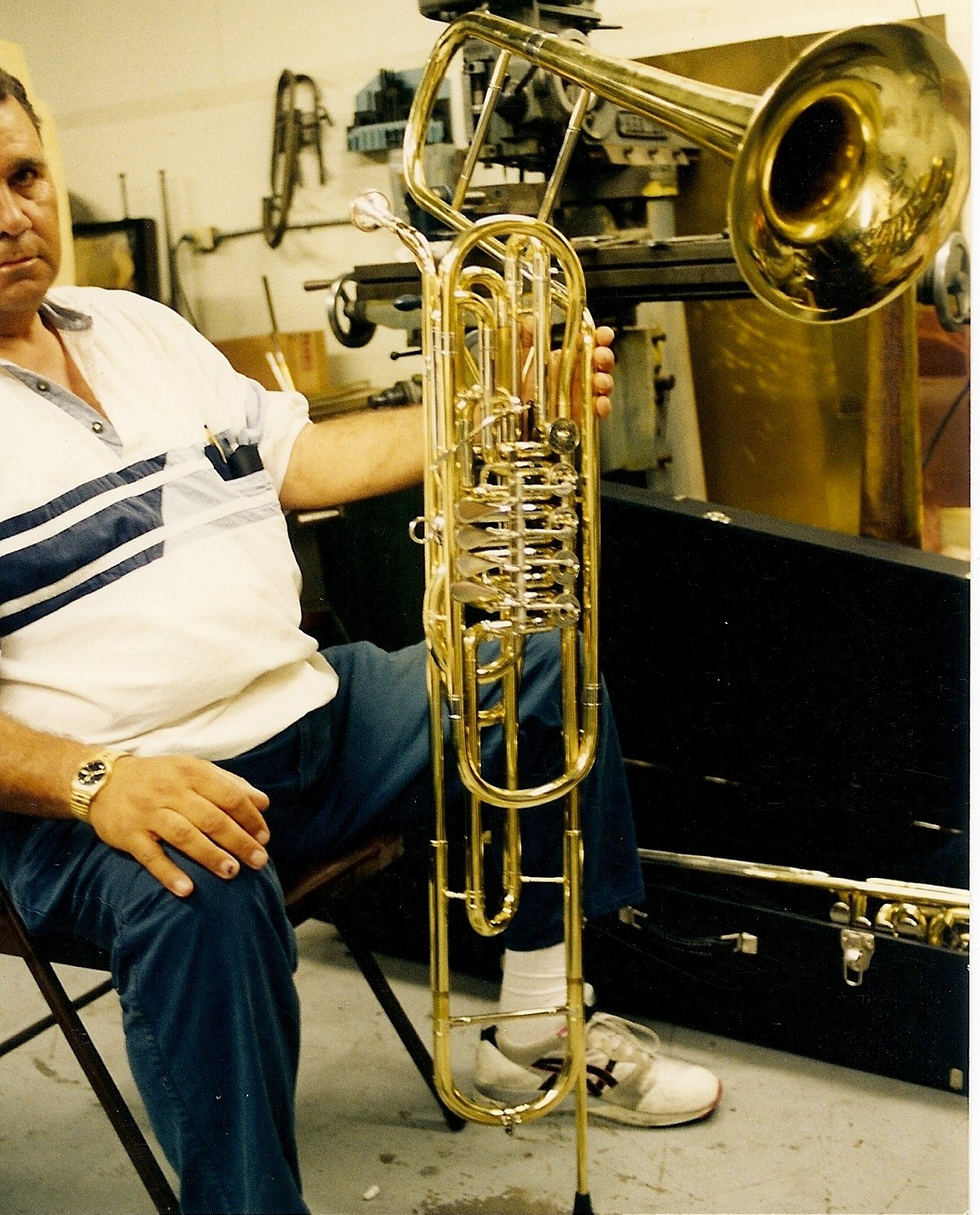Tommy Johnson's Cimbasso
Earlier in my career, there was a lot of confusion regarding the word "cimbasso". Today, thanks to the Internet, the whole world can read up on such obscure topics. After such a statement, I do want to encourage skepticism to be part of every Google search, but I did check the information that Wikipedia provides about the cimbasso and it's pretty good.
In our modern terminology a cimbasso is always a contrabass valve trombone, usually in inverted “L” shape and pitched in F or CC or more rarely in Eb or BBb. Historically, contrabass valve trombones were almost always pitched in either BBb or F, keeping in the tradition of German countries and almost all of Eastern and Northern Europe. They were not termed "cimbassi" but were called on to play those parts in Italian opera in the late 19th century that were written earlier in the century. The original instruments intended to play those parts were serpents, bass horns and their variants and later the ophicleides and more easily manageable valve instruments.
Click on an image below for larger views.
In the early 1990s, I purchased a used Rudy Meinl cimbasso in F and offered it for sale. I thought that it would be a difficult instrument to resell for anything approaching half the price of a new one. At the time, they were used only occasionally in Southern California either recording or opera.
When Tommy Johnson came in for a repair he was surprised to see it here and bought it immediately, telling me that he had been needing one for the demands of his studio work (Jim Self tells of the changing recording scene in "The Studio Tubist"). A short time later he asked me if I could make an alternate tuning slide to play in CC. I figured how much length would have to be added and convinced him that such a long slide would be very clumsy and likely not play well.
The next time Tommy came in he brought his Mirafone 184 CC tuba that he never used anymore. This was the tuba that George Strucel had added a sixth valve and second bell to. The last photo above shows a younger Tommy Johnson playing that tuba in my office. He had used it extensively in the 1960s and 1970s for movie and television work to get the contrabass trombone sound through the small bell (eg. “Dragnet” theme). He also had a BBb slide trombone but really hated to play it. He wanted me to use the tuba valve section to build a CC valve section for the Meinl bell. I did this and it worked quite well.
The first photo shows Tommy trying out the new valve section; the original is in the case behind him. Tommy was successfully promoting the use of cimbassi to the composers and arrangers in the studios that were always searching for new sounds. Next, of course, he needed a new bell for his cimbasso kit. This was a lot easier than modifying the valve section. I used a Kanstul marching baritone bell, slightly modified, and made up the rest of the tapered tubing from sheet stock. I knew that this bell would work from Larry Minick, who used Olds marching baritone bells for Roger Bobo's cimbasso and a succession of valve and slide contrabass trombones.
Now Tommy had a second instrument with a lower range to use as well as to lend to other players when both were needed. This instrument was loaned to both Doug Tornquist and Fred Green many times and eventually, Fred talked Tommy into selling it to him. Fred uses it regularly, including recently for the two latest of the Pirates of the Caribbean franchise.




